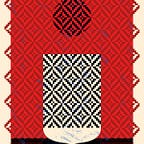A Visit to Dynamicland
Bret Victor’s interactive magnum opus in Oakland is a glimpse of what that might be like, and just a sliver of what our interactive future could become.
Imagine that any object you touched could interact with data, without needing to use a screen. Augmented reality, but without the headset. The entire… house… is the computer.
Here’s a bit of what it’s like, right now.
Possibilities
Something this novel leaves the brain churning with more questions and possibilities than answers, like stumbling into a version of the Matrix where everything around you gains some sort of dynamic superpower.
But alas, here are some ideas that sprang from this experience.
- What if the internet of things didn’t rely on a WiFi or bluetooth connection of any sort?
- What if you could open up the wedding invitations on your fridge, and your Google Calendar projects below it?
- What if you could plan a roadtrip with friends using only your coffee table?
- Or summon a YouTube video to be played on a whiteboard, just by writing words below a box?
- Or make music by arranging LEGOs?
- Or pivot and filter data in a spreadsheet by moving around magnet labels?
- Or build out a flowchart with sticky notes, and have it immediately digitized?
- Or have a LEGO building, and after putting a little LEGO person inside, you could see through their eyes as if it were Minecraft?
- Or could open up a birthday card and within it, watch a video message from the person who sent it to you?
- Or open the page of a magazine, and interact directly with its contents?
- Or flip through a book about molecules or microbiology, and suddenly have a microscope projected in front of you. And you could zoom in on that microscope, just by rotating the handle of your coffee mug.
- Or play the Incredible Machine on your bedroom wall, using little sketches?
- Or if you could pick up your pile of business cards, toss them onto a table and have each person’s profiles show up?
Who knows what will come of this magical paradise. But worst case scenario, it free us from the shackles of our screens, and allows us to truly reconnect with one another again, as well as the world around us.
What improvements are in store?
Or rather, what steps would need to be taken for it to get closer to achieving some of the ideas above? A few things come to mind, most just byproducts of this being at such an early stage.
- Feedback Response Time and Resolution: Still kind of feels like playing with an old Nokia phone, vs an iPhone. But to my earlier point, there’s a reason the Nokia came before the iPhone…
- Accuracy: Physical challenges such as shadows seem to cause difficulties, which could be alleviated with spacial memory of some sort.
- Transcending the Projector: Projectors have unique limitations, and are highly dependent on ambient light. Embedded OLEDs and some sort of tactile or laser-based sensors may have some promise here… imagine your entire wall becoming an interface, or the metal on your fridge coated in some sort of OLED material. Sounds crazy, but who knows, right?
What promise does it hold for humane science?
At the moment, simply bringing science and symbolic communication into the realm of Natural User Interfaces will be a huge step forward. There are a few facets of science interaction that it could help with.
Scientific Education: Imagine learning optics through simulation, for instance, and being able to build a synthetic microscope or telescope with strips of paper. As you align the paper, you see the photons warping and changing direction… And so on.
Scientific Experimentation: This one has me a little more stumped, but I’d love to hear ideas. It seems to be a sort of Catch-22, that given the observer effect, direct handling of the objects would be less ideal than a distanced augmented or virtual reality experience. So I guess you could say I’m skeptical on this front, but we’ll see.
Scientific Analysis/Exploration: Once hard data is acquired, then the observer effect becomes less important and analytical methods can take place. And analytical building blocks could be stated simply as Objects, Properties, and Relationships. So a dynamic medium would theoretically allow you to play around with various combinations of those building blocks, IRL. What might that look like? I have no idea, but it’ll have me thinking for some time…
Bonus Appreciation
That’s pretty much all for now. But there’s a bonus!
From a process perspective, the team has done an incredible job of establishing Values and Principles, and adhering to them. Dig it.
